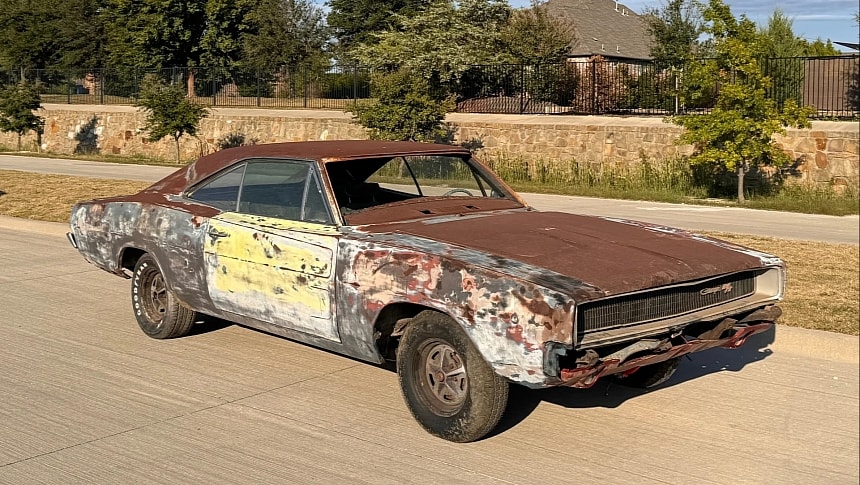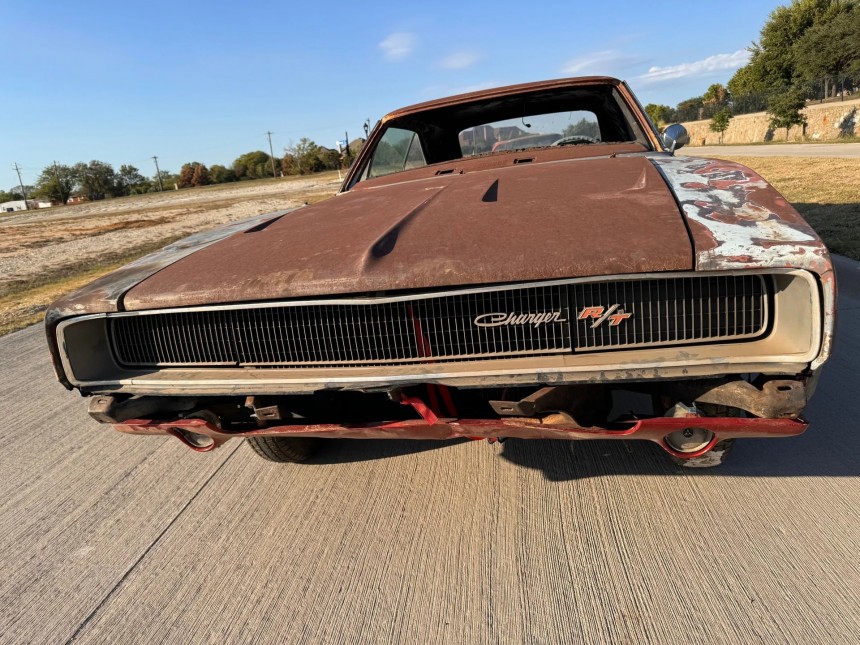For some unknown reason, Dodge’s reworked second-generation Charger became a cult icon of the muscle car age, and it rides a very high horse in today’s market. Perhaps it is a compensational turn of the tables after the decades in which these emblems of Detroit were a dime a dozen. But the high tide that we are currently witnessing is getting very close to that fine borderline between ‘out of my league’ and ‘out of your mind.’
It's not uncommon for certain examples of the fabled Mopars from the 1968-1970 generation to ask inconsiderately high premiums when changing hands. With around 225,000 examples rolling off the assembly lines in the three years of production, the Chrysler demigod is not falling off the ‘rare’ side of the bed. And yet, when ‘Charger’ and ‘1968’ join hands in the same sentence, the price goes up by default (and by at least 100% compared to other makes and models from the period).
Rust-bucket or showroom-like makes no difference: the top-dog muscle car in the Dodge arsenal of the late sixties is one expensive toy, and plenty of gearheads are still willing to cough up big bucks to fulfill a childhood dream. Take this crusty example in the gallery as Evidence: Exhibit A. It’s obviously in dire need of work, but it’s also a very appealing project.
See, ‘project’ is the keystone in this argumentation: the crispy, rusty Dodge starts from a not-so-enticing level, and it’s up to the owner to decide how much money should be burned down the road. Coming from the 1968 production run, this Charger is one of 96,000 examples assembled for the model year.
However, it is at the opposite end of the spectrum regarding drivetrain commonality - or the lack thereof. The Charger stirred quite the commotion when it made its second landfall in 1967 as a 1968 model. Yet, very few people ordered their example with a big-block 383 V8 Magnum mated to a four-speed manual gearbox. Two hundred fifty-nine customers were interested in the combination, which makes a car with this equipment all the more valuable, regardless of its condition.
This example featured in the story is one of those rare 383 4-speeds that (barely) made it to this day, and it is looking for a new owner. In exchange for $32,000, this sad-looking Dodge offers an adopted 383-cubic-inch V8 (6.3-liter) with a four-barrel carburetor, a lot of original sheet metal in fair condition, and many weekends of wrenching.
Allegedly, this car used to be blue with a blue and white interior and carried a white vinyl top. The head-scratching detail is the R/T emblem on the grille. The Road/Track package offered the 440 V8 as standard and the 426 Hemi as the only option. The 383 was the performance motor for regular Chargers, putting down 330 horses and 425 lb-ft of torque (335 PS, 576 Nm) in its four-barrel, 10.0:1 compression form.
The seller of this ‘well done’ Charger says it is a ‘very, very solid West Texas car with amazing floors and perfect structure.’ He doesn’t say whether or not that replacement 383 still has some life left in it. That’s the $32,000 question, and the answer might get the presumptive buyer to dig deeper into the bank account.
Rust-bucket or showroom-like makes no difference: the top-dog muscle car in the Dodge arsenal of the late sixties is one expensive toy, and plenty of gearheads are still willing to cough up big bucks to fulfill a childhood dream. Take this crusty example in the gallery as Evidence: Exhibit A. It’s obviously in dire need of work, but it’s also a very appealing project.
See, ‘project’ is the keystone in this argumentation: the crispy, rusty Dodge starts from a not-so-enticing level, and it’s up to the owner to decide how much money should be burned down the road. Coming from the 1968 production run, this Charger is one of 96,000 examples assembled for the model year.
This example featured in the story is one of those rare 383 4-speeds that (barely) made it to this day, and it is looking for a new owner. In exchange for $32,000, this sad-looking Dodge offers an adopted 383-cubic-inch V8 (6.3-liter) with a four-barrel carburetor, a lot of original sheet metal in fair condition, and many weekends of wrenching.
Allegedly, this car used to be blue with a blue and white interior and carried a white vinyl top. The head-scratching detail is the R/T emblem on the grille. The Road/Track package offered the 440 V8 as standard and the 426 Hemi as the only option. The 383 was the performance motor for regular Chargers, putting down 330 horses and 425 lb-ft of torque (335 PS, 576 Nm) in its four-barrel, 10.0:1 compression form.
The seller of this ‘well done’ Charger says it is a ‘very, very solid West Texas car with amazing floors and perfect structure.’ He doesn’t say whether or not that replacement 383 still has some life left in it. That’s the $32,000 question, and the answer might get the presumptive buyer to dig deeper into the bank account.








































